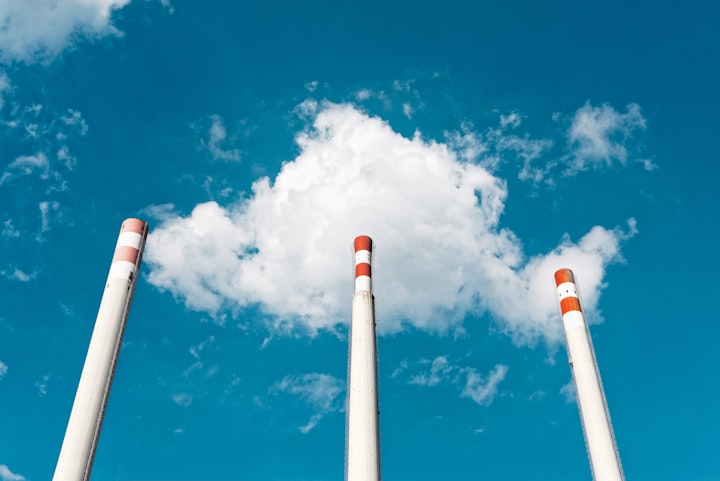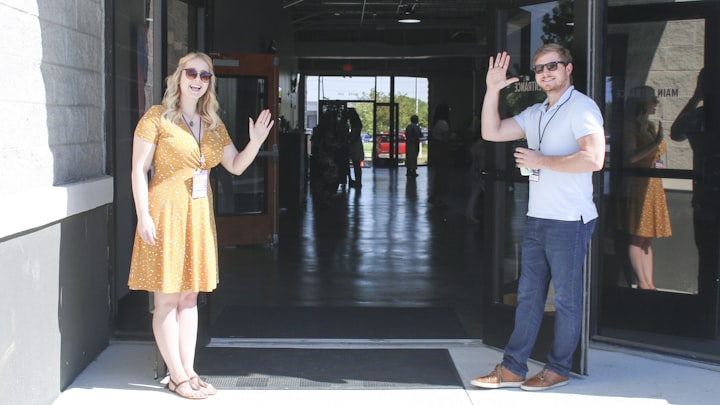Carbon Capture, Usage and Storage, A Climate Crisis Solution?
Is this technology a viable solution to beating the climate crisis or can it cause more harm than good?

With the climate crisis continuously getting worse, businesses and governments need to find solutions to reduce the amount of carbon going into the atmosphere. To beat the crisis, the world can't simply rely on renewable energy, governments will need to include carbon capture, usage and storage (CCUS) into the mix if they want to hit their climate targets.
According to the International Energy Agency (IEA), CCUS could reduce carbon emissions by almost a fifth, but can this technology deliver on its promises or is it too good to be true?
What is Carbon capture, usage and storage?
Carbon capture, usage and storage (CCUS) refers to a chain of different technologies aimed at capturing waste carbon dioxide (CO2), usually from large point sources of pollution like power plants, transporting it to a storage site, and depositing it where it will not enter the atmosphere. Some could be used to help grow greenhouse plants, make plastics, or even carbonate fizzy drinks. The first step is to fit factory chimneys with solvent filters, which trap carbon emissions before they escape, then the gas can be piped to locations to be used or stored. For the moment, there are about 30 CCUS projects operating around the world, which is nowhere near enough to clean up all of our emissions.
Why is CCUS needed?
Nowadays, Industrial production accounts for one-quarter of CO2 emissions from energy and industrial processes. With the demand for cement, steel and chemicals remaining strong to support a growing and increasingly urbanised global population, the future production of these materials will have to be more efficient and emit much less CO2 if governments want to meet their climate goals.
In the IEA's "Clean Technology Scenario", more than 28 GtCO2 could be captured from industrial facilities between now and 2060.

Carbon capture, usage and storage also offers several other potential benefits:
- The ability to generate additional power thanks to geologically stored CO2 which could be used to extract geothermal heat from the same locations in which it’s injected, producing renewable geothermal energy.
- CO2 can technically be turned into fuel, although it is rather difficult to achieve.
- Captured CO2 could also be used to strengthen concrete, leading to increased infrastructure durability.
What's the catch?
CCUS has always been controversial, most people are either heavily in favour of CCUS technology or heavily against. There are several reasons why this technology might not be the best solution.
Environmentalists tend to see CCUS as a distraction from the need to convert to renewable energy as quickly as possible. Some argue that investing in carbon capture wasting money that could be put to better use, like perfecting solar energy, building insulation, wind turbines or even tidal power.
Another drawback of carbon capture, usage and storage, is the considerable amount of extra power it requires, which would increase the cost of electricity. Talking of cost, CCUS technology is said to be very expensive, however, new methods for capturing and extracting CO2 are constantly being developed, always with the aim to become cheaper.
Where is CCUS in place?
There are currently almost 30 carbon capture, usage and storage projects in place around the world namely in the US, Canada, Norway, China and the UK.
Here are some of the biggest projects:
1. The Century natural gas processing facility in West Texas, US. The capturing plant began operations in November 2010 and is now the world’s single biggest CCS plant.
2. The Boundary Dam Carbon Capture and Storage (CCS) project located in Saskatchewan, Canada. Owned by SaskPower, the Boundary Dam coal-fired plant located in Estevan, Saskatchewan began operations in 2014.
3. The Shute Creek gas processing plant, located in Wyoming, US. The CCS facility, built near LaBarge, Lincoln County, is owned by ExxonMobil and captures approximately 365 million cubic feet per day of CO2, which is equivalent to removing more than 1.5 million cars off the road.

Bottom Line
Despite the controversy, it seems that carbon capture, usage and storage technology will become an important part of tackling the climate crisis. I think that if future projects aren't too expensive, it could definitely be a solution to this ever-growing problem, so long as it isn't to the expense of investing in renewable energy and other methods of reducing our CO2 emissions.
This story was originally published on The Detechtor, a technology blog covering the impact of tech on the environment and our health, check it out!
About the Creator
Scott Hickman
Bilingual living in France. I enjoy music, politics and technology. I also write on my tech blog: The Detechtor. https://www.thedetechtor.com






Comments
There are no comments for this story
Be the first to respond and start the conversation.